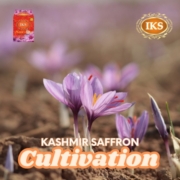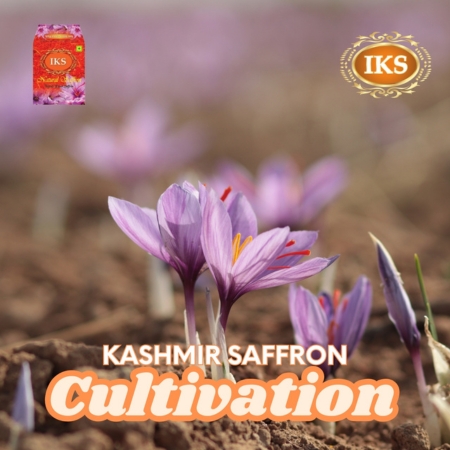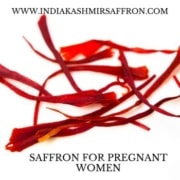Exploring the Art of Kashmir Saffron Cultivation: A Tradition of Excellence
Discovering the Art of Kashmir Saffron Cultivation – Introduction
Kashmir Saffron Cultivation – Kashmir, often referred to as “Paradise on Earth,” is not only known for its breathtaking landscapes and pristine beauty but also for producing one of the most precious spices in the world: saffron. Known as “Kashmiri Kesar,” this saffron is renowned for its rich aroma, vivid color, and unique flavor.
The art of cultivating saffron in the Kashmir Valley is a tradition that has been passed down through generations, and it plays a vital role in the region’s economy and culture. This article delves into the intricate process of saffron cultivation in Kashmir, exploring its history, techniques, challenges, and future prospects.
Discover the Heritage of Saffron: Buy Kashmir’s Treasured Spice!
The Historical Significance of Kashmir Saffron Cultivation
Ancient Origins and Cultural Importance
The history of saffron cultivation in Kashmir can be traced back to ancient times. According to historical records, saffron was introduced to the region by Persian traders and travelers.
Over the centuries, it became an integral part of Kashmiri culture, deeply embedded in the traditions and rituals of the region. Saffron is not only used for culinary purposes but also in religious ceremonies, traditional medicine, and as a natural dye.
Mughal Influence on Saffron Cultivation
The Mughal emperors played a significant role in promoting saffron cultivation in Kashmir. They recognized the high quality and unique characteristics of Kashmiri saffron and encouraged its production.
The Mughal gardens in Srinagar, such as Shalimar Bagh and Nishat Bagh, often featured saffron fields, highlighting its importance in the royal courts.
The Ideal Conditions for Kashmir Saffron Cultivation
Climate and Soil Requirements
Kashmir’s unique climatic conditions make it an ideal region for saffron cultivation. The saffron crocus, scientifically known as Crocus sativus, thrives in the cold winters and warm, dry summers of the Kashmir Valley.
The fertile soil, rich in organic matter, provides the necessary nutrients for the healthy growth of saffron plants.
- Climate: Saffron requires a distinct climatic pattern with cold winters and warm, dry summers. The temperature during the flowering season should be between 15-20°C (59-68°F), and the region should receive adequate rainfall during the growing period.
- Soil: The soil should be well-drained, sandy-loamy, and rich in organic matter. It should have a pH level between 6 and 8 to support optimal growth.
Geographic Factors
The saffron fields are primarily located in the districts of Pulwama, Budgam, and Srinagar. The elevation of these regions, ranging from 1,500 to 2,000 meters above sea level, provides the ideal conditions for saffron cultivation.
The terraced fields and gentle slopes help in proper water drainage, preventing waterlogging, which can be detrimental to saffron bulbs.
Unveil the Secrets of Saffron: Dive Into Our IKS Kesar!
The Kashmir Saffron Cultivation Process
Planting the Saffron Corms
The saffron cultivation process begins with the planting of saffron corms (bulbs). These corms are typically planted in well-prepared fields during the summer months, usually between July and August.
- Field Preparation: The fields are plowed and leveled to ensure proper drainage. Organic manure and fertilizers are added to enrich the soil.
- Planting Depth and Spacing: The corms are planted at a depth of 10-15 cm (4-6 inches) and spaced about 15-20 cm (6-8 inches) apart to allow sufficient room for growth.
Blooming and Harvesting
Saffron flowers bloom in the autumn, usually in October and November. The delicate, purple flowers emerge from the corms, each containing three vibrant crimson stigmas, which are the actual saffron threads.
- Harvesting: The flowers are handpicked early in the morning to preserve their potency. The harvesting process is labor-intensive and requires great care to ensure the flowers are not damaged.
- Stigma Separation: The stigmas are carefully separated from the flowers by hand. This process, known as “picking,” requires precision and skill to ensure that the threads are intact and of high quality.
Drying and Storage
After the stigmas are separated, they undergo a drying process to reduce moisture content and enhance their flavor, color, and aroma.
- Drying Methods: The traditional method involves spreading the stigmas on a fine mesh and placing them in a warm, dry environment. Modern techniques use dehydrators to ensure uniform drying.
- Storage: The dried saffron threads are stored in airtight containers to protect them from light, moisture, and air. Proper storage is crucial to maintain the quality and potency of saffron.
Challenges in Kashmir Saffron Cultivation
Climate Change and Environmental Factors
One of the significant challenges faced by saffron farmers in Kashmir is the impact of climate change. Unpredictable weather patterns, such as delayed rains and untimely snowfall, can adversely affect saffron yields.
The changing climatic conditions pose a threat to the traditional cultivation practices and require adaptive measures to ensure sustainability.
Economic Pressures and Market Competition
The economic sustainability of saffron farming is another concern for farmers in Kashmir. Fluctuating market prices, competition from cheaper, lower-quality saffron from other regions, and the high cost of cultivation contribute to the financial strain on farmers.
Ensuring fair compensation and support for zaffran growers is essential to preserve this traditional practice.
Soil Degradation and Pests
Soil degradation and pest infestations are additional challenges that saffron farmers must contend with. Overuse of chemical fertilizers and pesticides can lead to soil health deterioration, affecting saffron production.
Integrated pest management and organic farming practices are essential to address these issues.
Explore the Journey of Kashmiri Saffron: Learn About IKS Saffron Packs!
Innovations and Modern Techniques in Kashmir Saffron Cultivation
Greenhouse Cultivation
To combat the challenges posed by changing climatic conditions, greenhouse cultivation is being explored as an alternative method for saffron farming.
Greenhouses provide a controlled environment that ensures optimal growing conditions, protecting the saffron plants from adverse weather and pests.
Drip Irrigation Systems
Water management is critical for saffron cultivation. Drip irrigation systems have been introduced to ensure efficient water usage and prevent waterlogging.
These systems deliver water directly to the root zone of the plants, reducing wastage and improving overall crop health.
Genetic Research and Development
Genetic research is playing a crucial role in enhancing saffron quality and resilience. Scientists are exploring the genetic makeup of saffron to develop varieties that are more resistant to diseases and environmental stress.
These advancements aim to secure the future of saffron cultivation in Kashmir.
The Economic and Cultural Impact of Kesar in Kashmir Saffron Cultivation
Economic Importance
Saffron cultivation is a vital source of income for many families in Kashmir. The high value of saffron in the global market provides economic stability to the region.
Efforts are being made to promote Kashmiri saffron as a premium product, ensuring better market prices and fair trade practices.
Cultural Significance
Saffron holds immense cultural significance in Kashmir. It is used in various religious and cultural ceremonies, symbolizing purity and prosperity.
Saffron is also an essential ingredient in traditional Kashmiri cuisine, adding a unique flavor and color to dishes like Rogan Josh, saffron rice, and kehwa (a traditional Kashmiri tea).
Savor the Excellence: Learn Why Kashmiri Saffron is World-Renowned!
The Future of Kashmir Saffron Cultivation
Sustainable Farming Practices
The future of saffron cultivation in Kashmir lies in sustainable and ethical farming practices. Organic farming methods, reduced use of chemical fertilizers, and integrated pest management are essential to protect the environment and ensure the long-term viability of saffron farming.
Government Support and Policy Initiatives
Government support and policy initiatives play a crucial role in promoting saffron cultivation. Subsidies for saffron farmers, investment in research and development, and efforts to secure geographical indication (GI) status for Kashmiri saffron are steps in the right direction.
Market Expansion and Global Reach
Expanding the global market for Kashmiri saffron is essential for its economic sustainability. Marketing strategies that highlight the unique qualities and origin of Kashmiri saffron can create a niche market.
Collaborations with international culinary experts and food enthusiasts are also raising awareness and demand for this precious spice.
Conclusion
Kashmiri saffron is not just a spice; it is a symbol of the region’s rich cultural heritage and agricultural expertise. Despite the challenges faced by saffron farmers, the blend of traditional practices and modern advancements ensures that this exquisite spice continues to thrive.
As we look to the future, supporting sustainable and ethical saffron farming practices will be key to preserving the legacy of Kashmir saffron for generations to come. Embracing innovation while honoring tradition will allow this “red gold” to shine even brighter on the global stage.
Add Luxury to Your Pantry – Order Kashmir Saffron Online!














Leave a Reply
Want to join the discussion?Feel free to contribute!